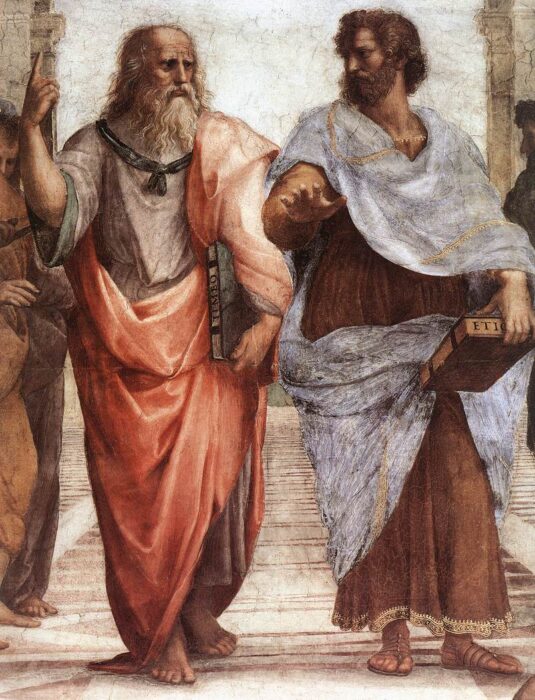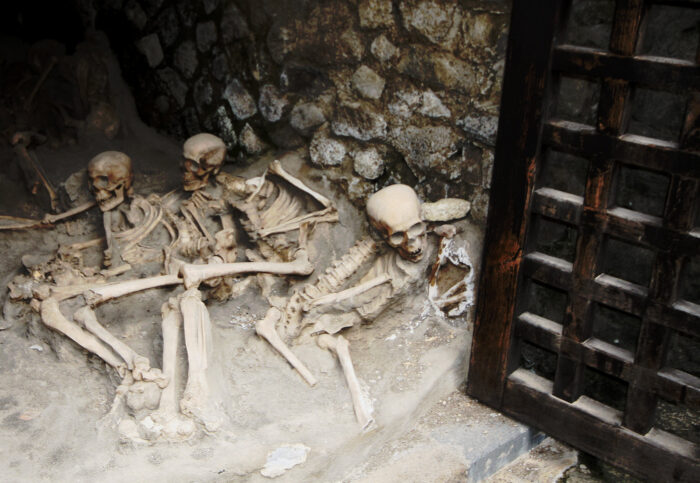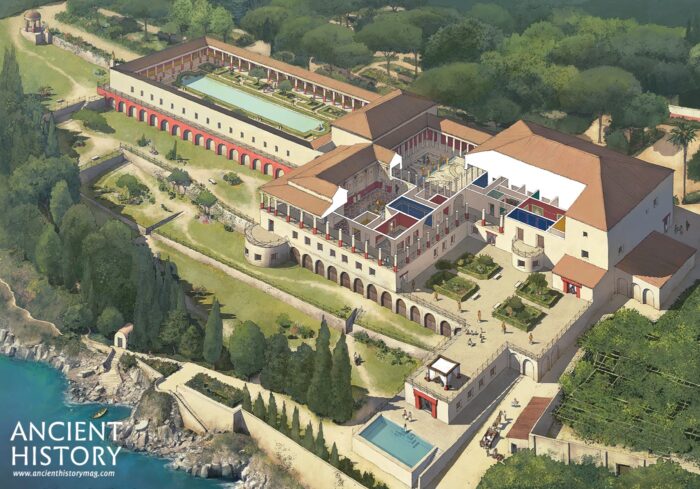How would you go about reading a rolled-up text that had transformed into a lump of coal?
If you were ahead of your time in the 1700s, you could have created a complex machine to painstakingly unroll a single scroll over the course of four years — and destroy a lot of the contents in the process.
If you were ahead of your time in 2024, you could use advanced X-ray imaging to “virtually unroll” the material with no damage. Or even employ AI tools to “read” pages faster.
Researchers are unleashing those tactics now on 2,500-year-old scrolls that reveal details as intimate as the history of Plato’s late-life enslavement, and his opinion about the music he heard on his last night on Earth.

Plato, left, and Aristotle, as depicted in ‘The School of Athens’ by Raphael Sanzio. Image: Flickr
Deathbed blues
The Herculaneum scrolls contain a wealth of philosophy and knowledge from the most revered Western thinkers of all time. Unfortunately, Mount Vesuvius turned the approximately 1,800 documents into charcoal (along with an estimated 16,000 souls) in 79 AD.
Vesuvius most famously buried inland Pompeii, but the lava flows also engulfed Herculaneum, a wealthy coastal town along the Gulf of Naples.

Volcanic ash buried Herculaneum in up to 20 meters of ash, preserving skeletons like these in boat houses in Herculaneum. Photo: Creative Commons
There, the library of one illustrious villa held thousands of priceless scrolls.
“Plato is just the start,” The University of Pisa’s Graziano Ranocchia told The Daily Mail. “Thanks to the most advanced imaging diagnostic techniques, we are finally able to read and decipher new sections of texts that previously seemed inaccessible.”
Contrary to previous opinion, the renowned philosopher didn’t think much of his deathbed music, said Ranocchia. An enslaved woman playing flute couldn’t find the groove, the expiring philosopher told his guests.
Ranocchia’s new discoveries also include Plato’s exact burial place — under a special garden near a shrine to the Muses in the Platonic Academy of Athens. It also turns out that Plato earned such a vaunted tomb despite spending more of his life in slavery than previously thought. Ranocchia said Plato probably became a slave shortly after Socrates’ death in either 399 or 404 BC, rather than the accepted 387 BC, CNN reported.
Treasure locked in ash
Excavations of Herculaneum began as early as the 1700s. By the 1750s, archaeologists had started working on the villa. Its treasures proved extensive — it may have belonged to the father-in-law of Julius Caesar.

Villa dei Papiri, rendering. Image: World History Encyclopedia
Eventually, it grew most famous for its library’s contents. The thousand-plus scrolls suffered heavy damage in the eruption, but they became the namesake of the site itself: the Villa dei Papiri — Papyrus Villa.
Efforts to unlock the scrolls’ secrets commenced right away. Amazingly, the pages were still legible — but almost impossible to unroll without destroying. By 1756, Abbot Piagio, the Vatican Library’s conserver of ancient manuscripts, conceived of a machine that could unroll a single manuscript in four years. Piagio’s device peeled open the documents millimeters at a time, and stenographers made copies of what they saw immediately, before the pages disintegrated.
The fragile carbonized papyrus could only be unrolled by millimeters per day, and any writing seen copied quickly before it faded, then given to scholars for review. Subsequent efforts by others destroyed several scrolls. This is why computerized scanning is so welcome. 2/ pic.twitter.com/PuWy4encPq
— Chapps (@chapps) November 5, 2023
“Piaggio was a revolutionary, but his machine also destroyed a lot of the work since he had to remove the first 0.5cm-1cm of the papyrus before he could start unrolling,” explained Ranocchia.
Big funding, new tech speed research
Generations of researchers remained mostly stumped as far as their contents. Finally, the development of “virtual unrolling” changed the game. Attempts involve shooting the scrolls with X-rays or other wavelengths of light to measure reflectivity differences.
Ranocchia’s methods build on the concept.
Shortwave infrared hyperspectral imaging is sensitive enough to measure variations in the way light bounces off the black ink on the papyrus. Though Ranocchia’s team still cannot peer through to the text at the center of the rolls, they can read unrolled artifacts at a higher rate than ever before.
Also up for study, there’s a Stoic history and a medical document from Alcmaeon, from when the doctor was producing early studies on the brain.
Ranocchia’s work is possible thanks to a 2021 grant from the European Union (ERC – European Research Council) worth $2.7 million in all. The five-year Greek Schools Project seeks to advance research on the Herculaneum scrolls with technological innovations.
Elsewhere, three students collected a $700,000 prize for using AI to decipher 2,000 previously illegible words from other scrolls.






